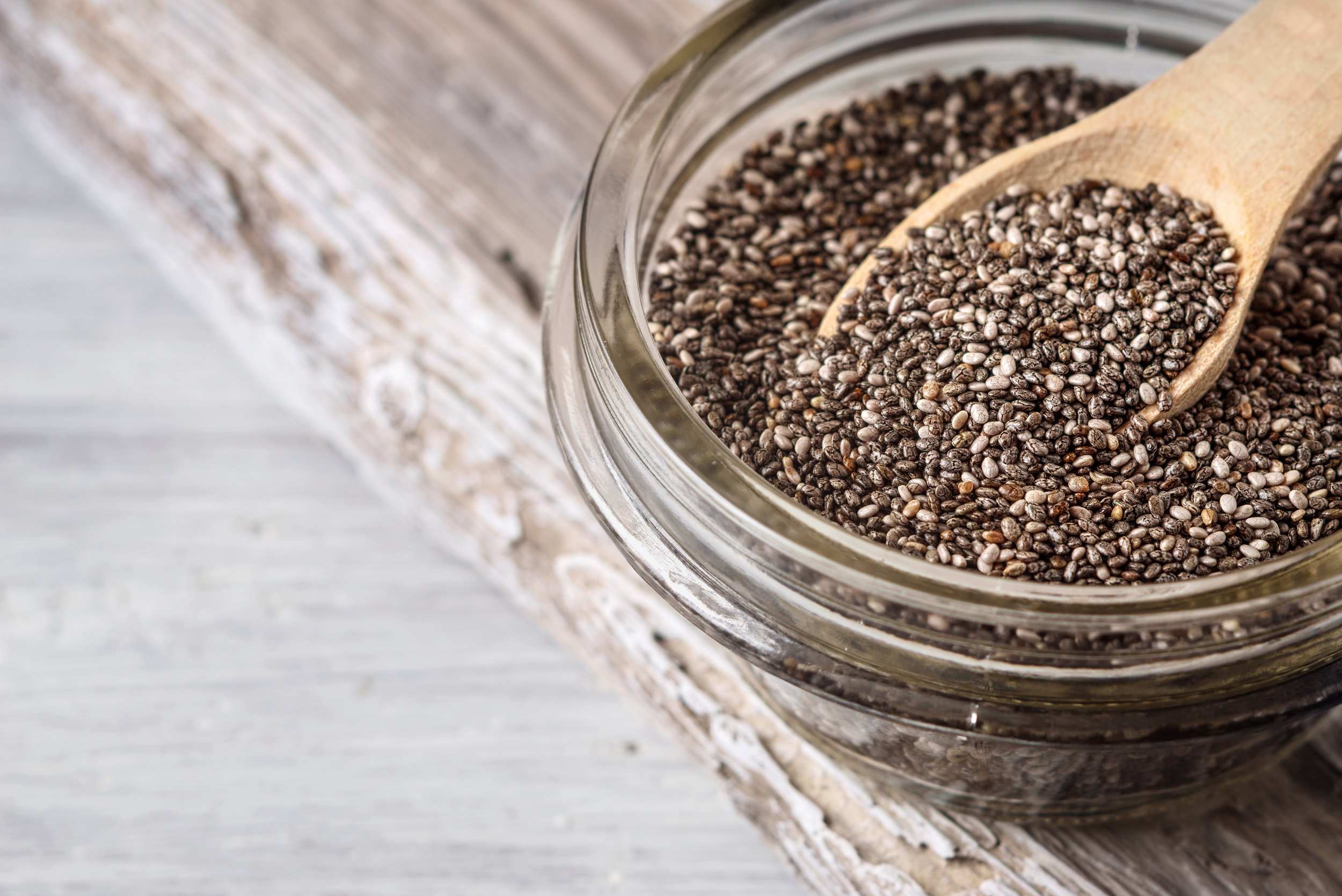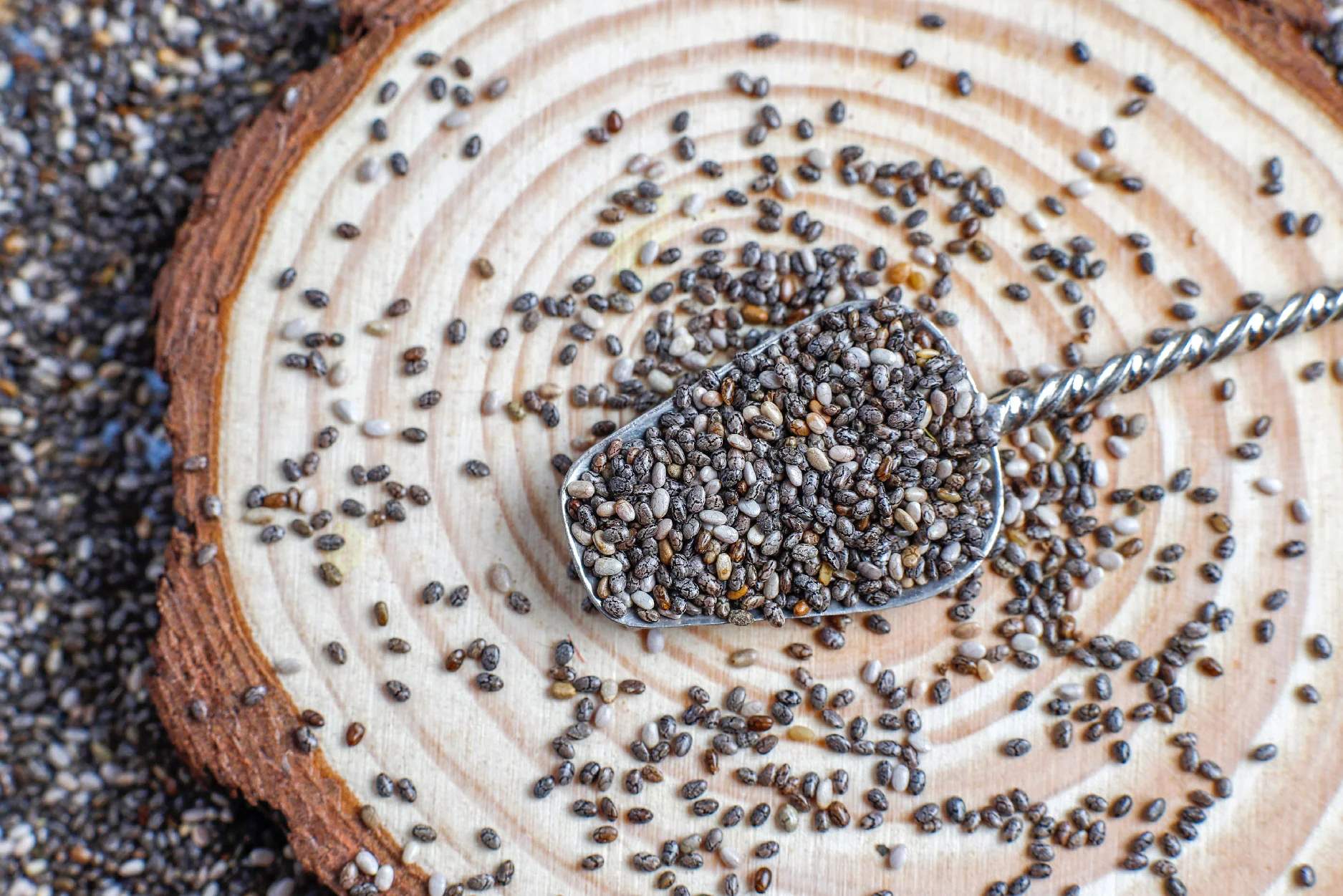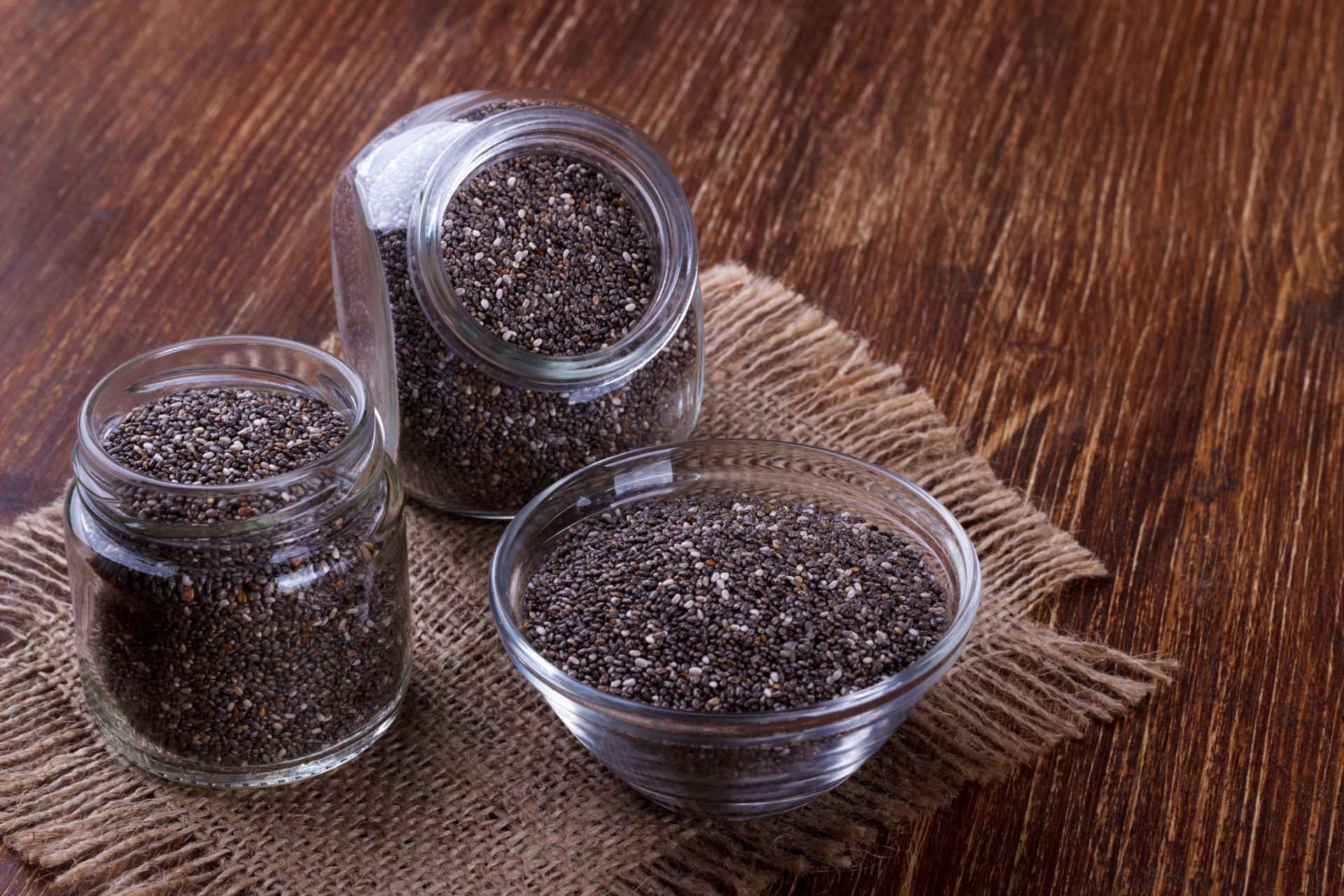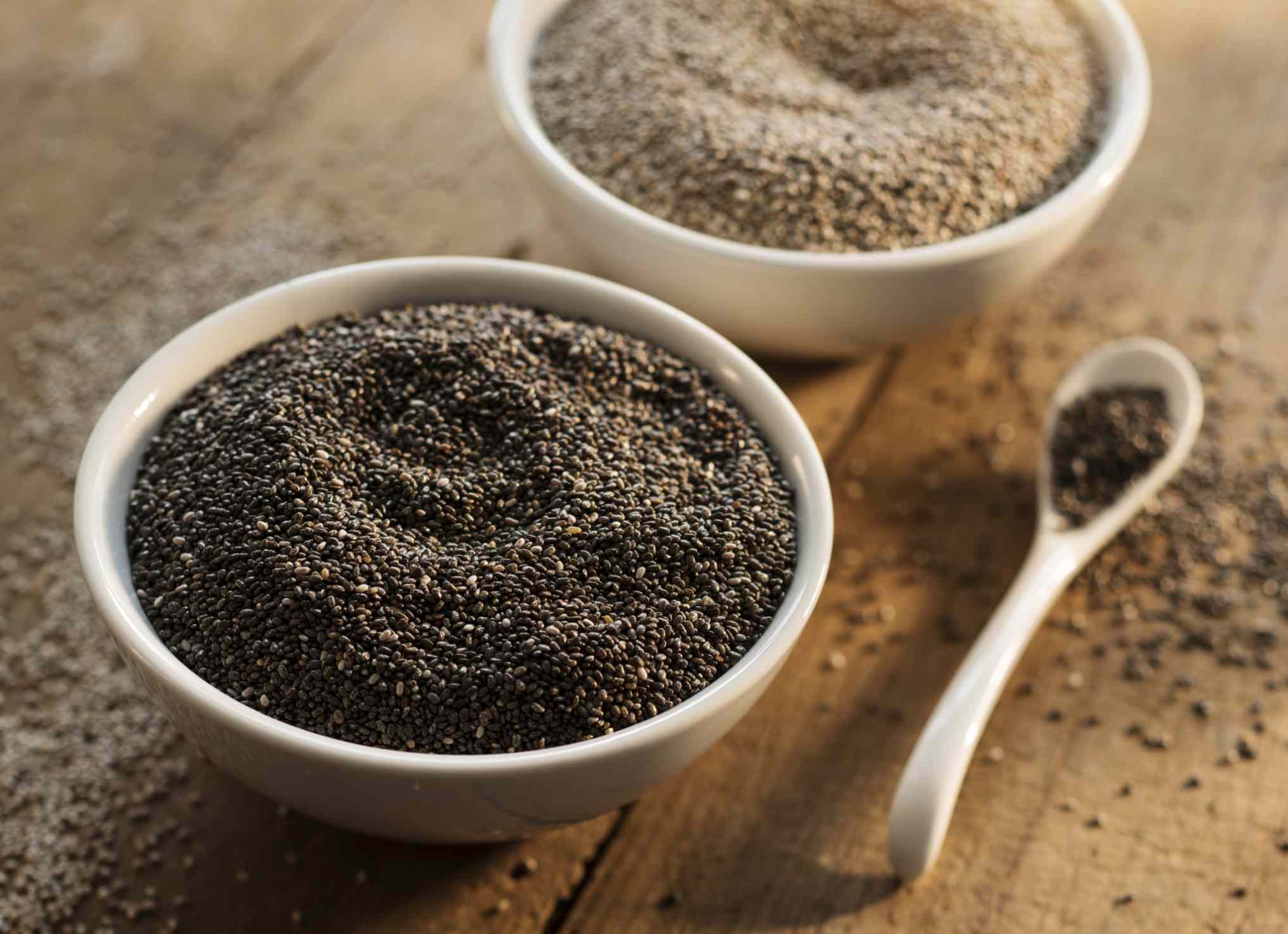Home>Types of Gardening>Edible Gardening>Where Do Chia Seeds Come From?
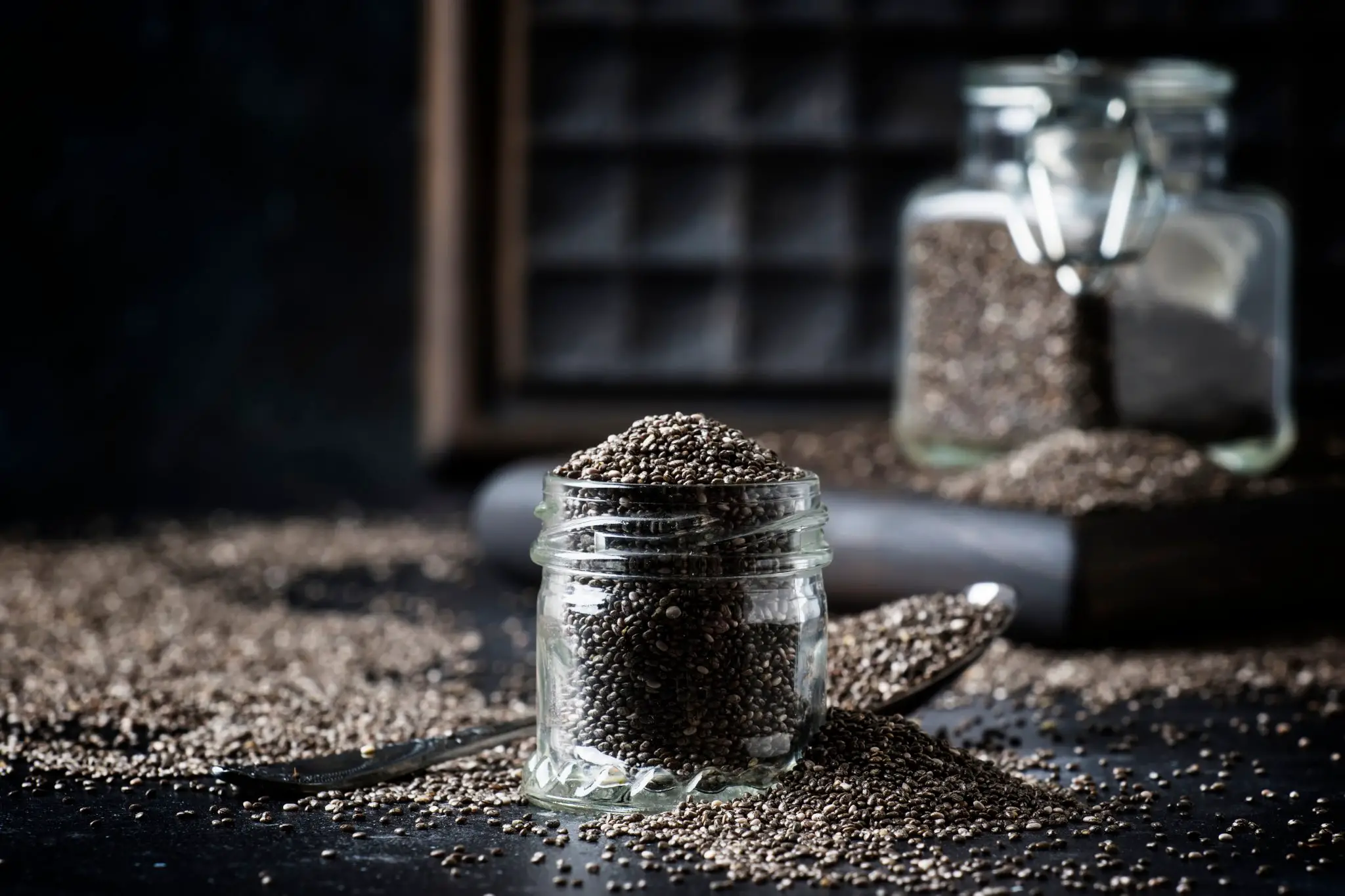

Edible Gardening
Where Do Chia Seeds Come From?
Published: September 21, 2023
Discover the origins of chia seeds and how you can grow your own with our guide on edible gardening. Start your journey towards a healthy and sustainable lifestyle today!
(Many of the links in this article redirect to a specific reviewed product. Your purchase of these products through affiliate links helps to generate commission for Chicagolandgardening.com, at no extra cost. Learn more)
Table of Contents
Introduction
Welcome to the fascinating world of chia seeds! These tiny powerhouses have gained popularity in recent years for their numerous health benefits and versatile culinary uses. But have you ever wondered where these amazing seeds come from?
Chia seeds have a rich history dating back thousands of years. They were first cultivated by the ancient civilizations of the Mayans and the Aztecs in Central America. In fact, chia is derived from the Mayan word for “strength,” which is a testament to the incredible nutritional punch these seeds pack.
Fast-forward to the present day, and chia seeds have made their way into the mainstream market as a superfood. Their popularity is due in large part to their impressive nutritional profile. Chia seeds are loaded with essential nutrients, including fiber, protein, omega-3 fatty acids, antioxidants, vitamins, and minerals. Plus, they are gluten-free and suitable for vegan and vegetarian diets.
In addition to their nutritional value, chia seeds also offer a range of health benefits. Their high fiber content helps promote healthy digestion and can aid in weight management. Chia seeds are also known to help stabilize blood sugar levels and reduce the risk of cardiovascular disease. They have even been shown to improve exercise performance and promote hydration due to their ability to absorb liquid.
When it comes to incorporating chia seeds into your daily routine, the possibilities are endless. These small seeds can be added to smoothies, sprinkled on top of yogurt or oatmeal, used as an egg substitute in baking, or even made into a refreshing beverage known as chia fresca. Their mild, nutty flavor makes them a versatile ingredient that can enhance both sweet and savory dishes.
In this article, we will explore the fascinating history of chia seeds, delve into their cultivation process, highlight their nutritional value, discuss their health benefits, and provide some delicious recipes to inspire you to incorporate chia seeds into your edible gardening journey. Get ready to unlock the secrets of this ancient superfood!
History of Chia Seeds
The history of chia seeds dates back thousands of years to the ancient civilizations of the Mayans and the Aztecs. These cultures recognized the immense nutritional value of chia seeds and considered them a staple food in their diets.
The Mayans and Aztecs revered chia seeds for their high energy and endurance-boosting properties. In fact, chia seeds were often used by warriors before battles or long journeys to provide sustained nourishment and stamina.
Chia seeds were so highly regarded that they were often used as currency and offered as tribute to rulers and religious figures. Archaeological evidence suggests that chia seeds were a significant part of the cultural and economic fabric of these ancient civilizations.
Chia seeds were not only valued for their nutrition but also had spiritual significance. Mayan legends speak of chia seeds being a gift from the gods, bringing strength, vitality, and fertility to those who consumed them.
With the arrival of the Spanish conquistadors in Central America, the cultivation and consumption of chia seeds experienced a decline. The colonizers imposed their own crops and dietary habits, causing the cultivation of chia seeds to decline significantly.
However, in recent years, chia seeds have experienced a resurgence in popularity due to their remarkable nutritional profile. Health-conscious individuals have rediscovered the incredible benefits of these tiny seeds, leading to increased cultivation and consumption worldwide.
The revival of chia seeds as a superfood can be attributed to their exceptional nutritional content. These seeds are packed with fiber, protein, omega-3 fatty acids, antioxidants, vitamins, and minerals, making them a powerhouse of essential nutrients.
Today, chia seeds are cultivated in various regions around the world, including Mexico, Bolivia, Argentina, Australia, and the United States. Chia plants are hardy and adaptable, thriving in different climates and soil conditions.
As we continue to explore the world of edible gardening, it is important to honor the ancient traditions and wisdom that have been passed down through generations. The history of chia seeds reminds us of the incredible value that nature provides in the form of nutritious and versatile foods.
Cultivation of Chia Seeds
Chia plants (Salvia hispanica) are annual herbs that belong to the mint family. They are native to Central America and have been cultivated for thousands of years. Today, chia seeds are grown in various parts of the world, including Mexico, Bolivia, Argentina, Australia, and the United States.
Chia plants are well-suited for cultivation as they are highly adaptable to different climates and soil conditions. They can be grown in both tropical and temperate regions, making them accessible to a wide range of farmers and gardeners.
Chia plants prefer well-draining soil with a pH range between 6 and 8. They can tolerate both full sun and partial shade, although they thrive in areas with plenty of sunlight. In terms of water requirements, chia plants are drought-tolerant once established but will benefit from regular watering during dry spells.
The cultivation of chia seeds typically begins with sowing the seeds directly into the soil. The seeds are small and can easily be spread evenly across the prepared planting area. It’s important to maintain proper spacing between plants to allow for adequate airflow and prevent overcrowding.
Chia plants have a relatively fast growth rate and can reach heights between 3 and 5 feet. They produce beautiful purple or white flowers that attract pollinators like bees and butterflies. These flowers eventually give way to seed pods that contain chia seeds.
Harvesting chia seeds is a labor-intensive process that requires patience and care. The seed pods need to be carefully monitored and harvested at the right time to ensure optimal seed quality. Once the seed pods are fully matured and dry, they can be gently collected and placed in a container.
After harvesting, it’s important to properly dry the chia seeds to ensure their longevity and prevent mold formation. The seeds can be spread out in a single layer on a clean, dry surface and left to air dry for a few days. Once completely dry, the seeds can be stored in airtight containers in a cool, dark place.
Chia seeds have a long shelf life and can be stored for several years if kept in the right conditions. This makes them a convenient and sustainable addition to any edible gardening endeavor.
Whether you’re a commercial farmer or an enthusiastic home gardener, the cultivation of chia seeds can be a rewarding experience. Not only are these plants beautiful and beneficial to pollinators, but they also provide a bountiful harvest of nutrient-dense seeds.
Nutritional Value of Chia Seeds
Chia seeds are small but mighty when it comes to their nutritional value. These tiny seeds are packed with an impressive array of essential nutrients, making them a popular choice for health-conscious individuals.
The nutritional composition of chia seeds is incredibly dense. They are an excellent source of dietary fiber, providing both soluble and insoluble fiber to support a healthy digestive system. In fact, just one ounce (28 grams) of chia seeds contains a whopping 10 grams of fiber, which is approximately one-third of the daily recommended intake for adults.
Chia seeds are also rich in plant-based protein, making them an excellent option for vegetarians and vegans. They contain all essential amino acids, making them a complete protein source. One ounce of chia seeds contains around 4 grams of protein, helping to support muscle growth and repair.
One of the standout nutritional aspects of chia seeds is their high content of omega-3 fatty acids. These essential fats have been linked to numerous health benefits, including improved heart health, reduced inflammation, and enhanced brain function. Chia seeds are one of the best plant-based sources of omega-3 fatty acids, containing more omega-3s than most fish.
In addition to fiber, protein, and omega-3s, chia seeds are also rich in antioxidants, vitamins, and minerals. They are a great source of calcium, magnesium, phosphorus, and manganese, which are essential for maintaining healthy bones and teeth. Chia seeds are also a good source of iron, zinc, and vitamin B-complex.
What makes chia seeds even more remarkable is their ability to absorb liquid and form a gel-like consistency. When soaked in water or other liquids, chia seeds can absorb up to 10 times their weight in liquid. This unique quality makes chia seeds an excellent thickening agent and can be used in recipes such as puddings, jams, and sauces.
When it comes to incorporating chia seeds into your diet, it’s important to start with a small amount and gradually increase your intake. This will give your body time to adjust to the increased fiber content and avoid any digestive discomfort.
With their exceptional nutritional profile, chia seeds offer a convenient and versatile way to boost the nutrient content of your meals. Whether sprinkled on top of yogurt, blended into smoothies, or used as an egg substitute in baking, chia seeds provide a nutritional punch that can contribute to your overall well-being.
Health Benefits of Chia Seeds
Chia seeds not only offer a wide range of nutrients but also provide numerous health benefits. Incorporating these tiny seeds into your diet can have a positive impact on overall well-being. Let’s explore some of the health benefits of chia seeds:
1. Digestive Health: Chia seeds are an excellent source of dietary fiber, which plays a crucial role in maintaining a healthy digestive system. The high fiber content helps promote regular bowel movements, prevent constipation, and support the growth of beneficial gut bacteria.
2. Heart Health: Chia seeds are rich in omega-3 fatty acids, particularly alpha-linolenic acid (ALA). These omega-3s have been shown to help reduce inflammation, lower cholesterol levels, and improve heart health. Consuming chia seeds regularly may help lower the risk of cardiovascular diseases.
3. Blood Sugar Control: The gel-like consistency formed by chia seeds when they come into contact with liquid can slow down the digestion process. This, in turn, helps regulate blood sugar levels and prevents spikes and crashes. Adding chia seeds to meals can be particularly beneficial for individuals with diabetes or those looking to manage their blood sugar levels.
4. Weight Management: Chia seeds have the ability to absorb water, swelling up and creating a feeling of fullness. This can help control appetite and reduce the urge to overeat, potentially aiding in weight management. The high fiber and protein content of chia seeds also contribute to increased satiety.
5. Antioxidant Activity: Chia seeds are packed with antioxidants, which help protect the body against free radicals and oxidative stress. This can help reduce inflammation, support a healthy immune system, and lower the risk of chronic diseases such as cancer and heart disease.
6. Bone Health: Chia seeds are a good source of minerals like calcium, phosphorus, and manganese, which are essential for strong and healthy bones. Consuming chia seeds regularly can contribute to maintaining optimal bone density and reducing the risk of osteoporosis.
7. Hydration: Due to their ability to absorb liquid, chia seeds can help retain water in the body and promote hydration. This can be particularly beneficial for athletes or individuals engaging in physical activity, as proper hydration is essential for overall performance and well-being.
With their impressive nutritional profile and array of health benefits, chia seeds are a valuable addition to any diet. However, it’s important to remember that chia seeds should be consumed as part of a balanced and varied diet, and individual needs may vary. Consult with a healthcare professional or registered dietitian for personalized advice and recommendations.
Culinary Uses of Chia Seeds
Chia seeds are not only incredibly nutritious, but they also offer a variety of culinary possibilities. These tiny seeds have a mild, nutty flavor, making them a versatile ingredient that can enhance both sweet and savory dishes. Let’s explore some of the popular culinary uses of chia seeds:
1. Smoothies and Beverages: Chia seeds can be added to smoothies to give them an extra boost of nutrition. Simply blend your favorite fruits, vegetables, and a tablespoon or two of chia seeds for a nutritious and filling beverage. Chia seeds can also be incorporated into flavored water, juices, or even made into a refreshing chia fresca drink.
2. Baking: Chia seeds can be used as a healthy alternative to eggs in baking recipes. Simply combine one tablespoon of ground chia seeds with three tablespoons of water, and let it sit for a few minutes until it forms a gel-like consistency. This chia gel can then be used as an egg substitute in various baked goods, such as muffins, cookies, and cakes.
3. Puddings and Parfaits: Chia seeds can be used to create delicious and nutritious puddings and parfaits. By combining chia seeds, a liquid such as plant-based milk or yogurt, and your choice of sweetener, you can create a creamy and satisfying dessert. Allow the mixture to sit in the refrigerator for a few hours or overnight, and enjoy a refreshing chia pudding or parfait topped with fruits, nuts, or granola.
4. Toppings and Sprinkles: Add a nutritional boost to your meals by sprinkling chia seeds on top of yogurt, oatmeal, cereal, salads, or soups. Chia seeds add a crunchy texture and a subtle nutty flavor, enhancing the overall taste and nutritional value of your dishes.
5. Homemade Energy Bars and Granola: Chia seeds can be incorporated into homemade energy bars and granola for a nutritious and convenient snack option. Their ability to absorb liquid helps bind the ingredients together, creating a chewy texture. Combine chia seeds with oats, nuts, dried fruits, and sweeteners of your choice to create delicious and healthy treats.
6. Chia Seed Jam: Chia seeds can be used to make a simple and healthy jam alternative. By blending your favorite fruits and adding chia seeds, you can create a thick and flavorful jam without the need for added sugars or pectin. This homemade chia seed jam can be enjoyed on toast, crackers, or as a filling for pastries.
7. Chia Seed Salad Dressing: Chia seeds can be used to thicken and add nutritional value to homemade salad dressings. Mix chia seeds with your preferred combination of vinegar, oil, herbs, and spices to create a flavorful and nutrient-rich dressing. The chia seeds will help emulsify the dressing and give it a thicker consistency.
These are just a few examples of how to incorporate chia seeds into your culinary adventures. Get creative, experiment with recipes, and discover new ways to enjoy the benefits of chia seeds in your edible gardening journey.
Popular Chia Seed Recipes
Chia seeds are a versatile superfood that can be incorporated into a wide range of delicious recipes. Whether you’re looking for a nutritious breakfast, a refreshing beverage, or a wholesome snack, here are some popular chia seed recipes to inspire you:
1. Chia Seed Pudding: Start your day with a nutritious and satisfying chia seed pudding. Simply mix chia seeds with your choice of plant-based milk, sweetener, and flavorings like vanilla or cocoa powder. Allow the mixture to sit in the refrigerator for a few hours or overnight until it thickens into a creamy pudding. Top with fresh fruits, nuts, and a drizzle of honey for added flavor.
2. Chia Fresca: Stay hydrated with a refreshing chia fresca drink. Mix chia seeds with water, lemon or lime juice, and a sweetener of your choice. Let the mixture sit for a few minutes until the chia seeds form a gelatinous texture. Serve chilled and enjoy as a thirst-quenching beverage that’s packed with nutrients.
3. Chia Energy Balls: Whip up a batch of chia energy balls for a convenient and nutritious snack on-the-go. Combine chia seeds with nut butter, oats, honey, and other optional add-ins like dried fruits or chocolate chips. Roll into bite-sized balls and refrigerate until firm. These energy balls provide a perfect balance of fiber, protein, and healthy fats to keep you energized throughout the day.
4. Chia Seed Smoothie: Boost your smoothies with the nutritional power of chia seeds. Blend your favorite fruits, vegetables, and a tablespoon of chia seeds with a liquid base like almond milk or coconut water. The chia seeds will add a thicker texture and an extra burst of fiber and omega-3 fatty acids.
5. Chia Seed Overnight Oats: Prepare a quick and easy breakfast by combining chia seeds with rolled oats, milk or yogurt, and a sweetener of your choice. Stir well and let the mixture soak overnight in the refrigerator. In the morning, you’ll have a delicious and nutrient-packed bowl of overnight oats ready to be enjoyed. Add your preferred toppings like fresh fruits, nuts, or a drizzle of maple syrup.
6. Chia Seed Jam: Make a healthier version of jam by combining mashed fruits with chia seeds and a natural sweetener. Heat the mixture until it thickens, stirring frequently. Let it cool, and you’ll have a delightful homemade chia seed jam that can be used as a spread on toast, crackers, or even as a filling for pastries.
7. Chia Yogurt Parfait: Layer chia pudding with your favorite yogurt and fresh fruits to create a delicious and nutritious parfait. Alternate between layers of chia pudding, yogurt, and fruits in a glass or jar. Top with a sprinkle of granola or nuts for added crunchiness.
These are just a few examples of the many ways you can incorporate chia seeds into your culinary creations. Let your creativity guide you and discover new recipes that showcase the versatility and goodness of chia seeds.
Conclusion
Chia seeds have undoubtedly earned their reputation as a superfood with their rich history, exceptional nutritional profile, and versatile culinary uses. From their ancient roots with the Mayans and Aztecs to their resurgence in modern times, chia seeds continue to captivate edible gardening enthusiasts and health-conscious individuals alike.
Not only are chia seeds packed with fiber, protein, omega-3 fatty acids, antioxidants, vitamins, and minerals, but they also offer a myriad of health benefits. From promoting digestive health and supporting heart health to aiding in weight management and controlling blood sugar levels, chia seeds are a valuable addition to a healthy lifestyle.
The cultivation of chia seeds is relatively straightforward, as these plants are adaptable to various climates and soil conditions, making them accessible to a wide range of individuals interested in edible gardening. Their resilience and bountiful harvests make them an excellent choice for both commercial farmers and home gardeners.
When it comes to culinary uses, chia seeds offer endless possibilities. From incorporating them into smoothies, puddings, and energy balls to using them as egg substitutes in baking and making homemade jams, chia seeds provide a nutritional boost and enhance the flavor and texture of a wide range of dishes.
As you embark on your edible gardening journey, consider adding chia seeds to your repertoire. Whether you’re growing them yourself or sourcing them from a trusted supplier, these tiny seeds will make a big impact on your health and culinary creations.
Remember to experiment with different recipes and enjoy the process of discovering new and delicious ways to incorporate chia seeds into your meals. With their versatility, nutritional profile, and incredible health benefits, chia seeds are truly a treasure worth exploring in the world of edible gardening.


